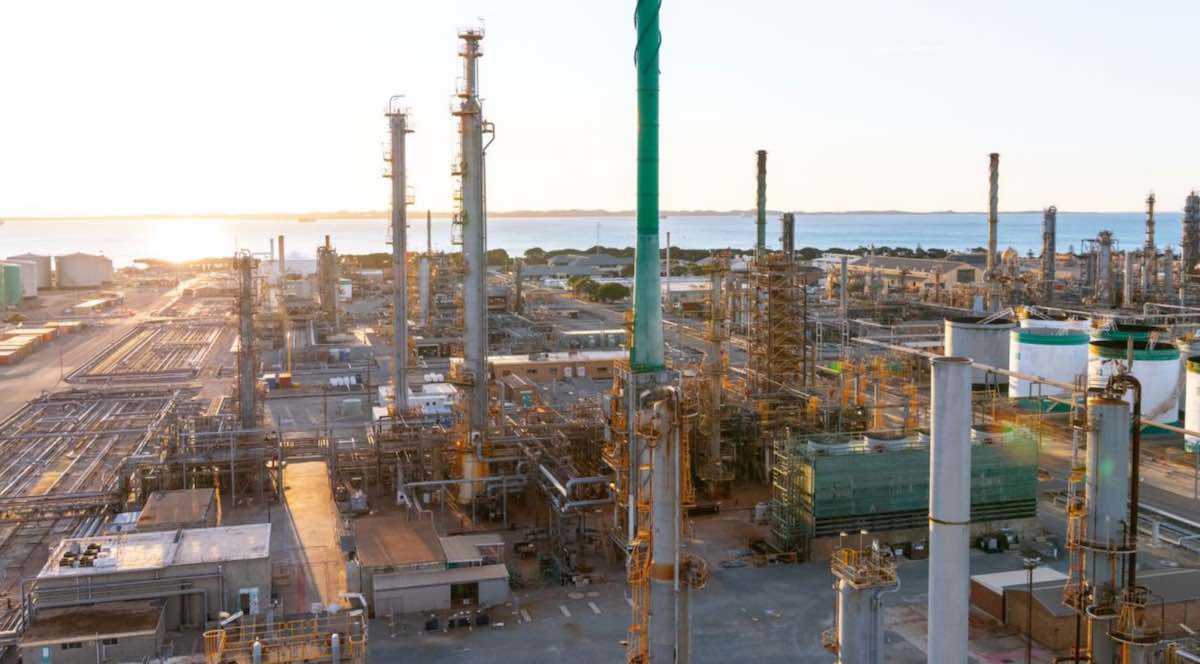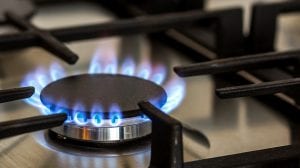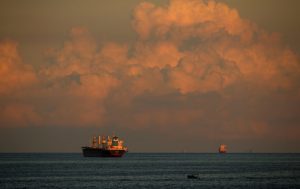The site of what was once Australia’s largest oil refinery is being sized up as a renewable hydrogen hub, complete with large-scale electrolyser, as part of a feasibility study being conducted by BP Australia and Macquarie Capital, and backed by the state government.
BP said on Tuesday that it was undertaking a feasibility study into the production of green hydrogen at the site of recently shuttered Kwinana refinery, roughly 30km south of Perth, to add to plans already underway to produce sustainable aviation fuel and “renewable diesel” at the facility.
The feasibility study will be conducted in partnership with Macquarie Capital and backed by funding from the Western Australian government, and would take into account bp’s foothold in the Kwinana Industrial Area, the largest industrial cluster in the state.
A spokesperson for bp said on Tuesday that the plans for Kwinana were focused more on the production and supply of renewable hydrogen for the domestic market, catering in particular to Australia’s hard-to-abate sectors, including heavy industry, mining and transport.
This is in contrast to the plans recently firmed up by bp Australia to develop a massive green hydrogen and green ammonia export project requiring more than four gigawatts of wind and solar capacity.
The company told RenewEconomy on Tuesday that the Kwinana feasibility study, which was expected to conclude in the first half 2022, would establish domestic industrial demand and potential partnerships to underpin construction of a large-scale green hydrogen electrolyser in the Kwinana Industrial Area.
A spokesperson said the amount and type of renewable energy generation capacity required to supply the electrolyser would be determined as part of the feasibility study, as would costs around the project.
“For more than 65 years, bp’s Kwinana site has played an integral role in the Kwinana Industrial Area, which is comprised of a diverse range of high emission producing industries, including mineral refineries, power stations, chemical plants and cement works,” said bp Australia president, Frédéric Baudry.
“BP has a strong track record as an energy provider to the industrial area and has readily accessible land, existing infrastructure including storage and distribution facilities, and a team with extensive operational capabilities and experience.
“With our unique capabilities, bp can offer increasingly complex, multi-energy solutions to its partners and customers through their decarbonisation journey.”
On its plans to make “sustainable” and “renewable fuels” for aviation and transport, the BP spokesperson clarified that the company was talking about second generation biofuels, which used organic biomasses to create a fuel “chemically identical” to petroleum diesel, but with 80% less greenhouse gas emissions.
The closure of the Kwinana fossil fuel refinery was announced by BP in October of last year and the facility ceased production of crude oil in March. It had employed around 650 people – 400 permanent staff and 250 contractors.
At the time of the announcement, BP said it would convert the facility to an import terminal, while investigating opportunities “to harness the existing and emerging technologies required for the decarbonisation of the Western Australian economy.”
Earlier this month, bp received the technical tick of approval for a separate massive green hydrogen and green ammonia project in Western Australia that would require more than four gigawatts of wind and solar capacity.
In that study, BP had identified the area around Geraldton, north of Perth, as one of its key target areas for renewable hydrogen thanks to its “vast wind and solar” resource, and its access to land and ports.
The feasibility study, conducted by GHD and co-funded by the Australian Renewable Energy Agency, looked at an initial 34.5MW demonstration project with a view to ramping up to a 2,000MW electrolyser facility that would require at least 2GW each of wind and solar to supply.
Macquarie Group, meanwhile, has its hand in another, separate, massive green hydrogen export project, having signed on in 2018 as a capital partner in the Asian Renewable Energy Hub being developed in WA’s Pilbara region.
That project – being developed by a consortium that includes Australia’s CWP Renewables, wind turbine manufacturer Vestas and Intercontinental Energy – proposes to build up to 15,000MW of new wind and solar power and has expanded its long term plans to an extraordinary 26,000MW.
John Pickhaver, co-head of Macquarie Capital ANZ, said on Tuesday that the group believed Australia – and Kwinana in particular – had a number of use cases that supported a “meaningful” green hydrogen industry.
“We are looking forward to working with bp and the Western Australian Government on this significant project,” he said.
In a separate statement, the Western Australia government said BP Australia would receive $300,000 to progress its Kwinana Clean Fuels Hub proposal, as part of an additional $61.5 million the McGowan government was investing to “supercharge” the state’s renewable hydrogen industry.
“BP’s proposal to convert the old Kwinana oil refinery into a green hydrogen hub will help to revitalise Kwinana and bring this facility into a low-emissions future,” said state hydrogen minister Alannah MacTiernan in a statement.









